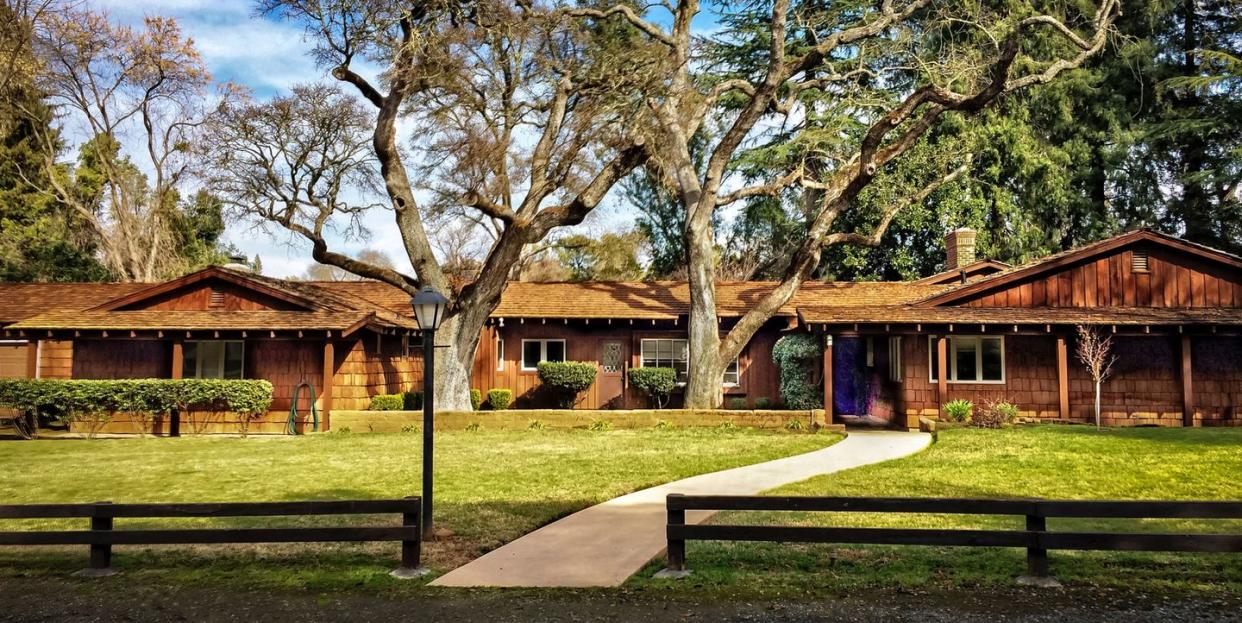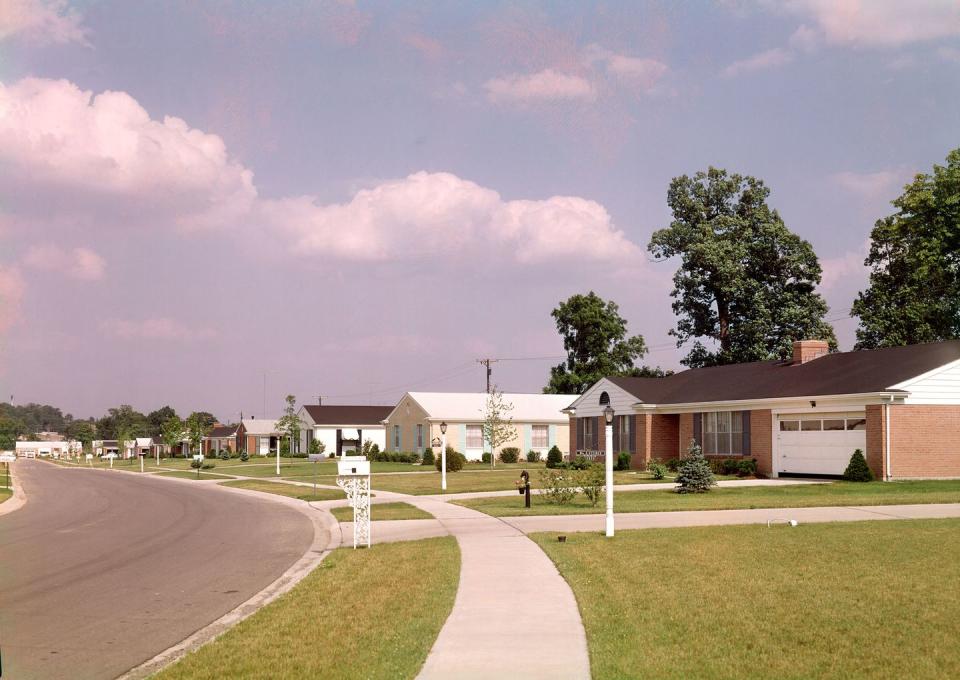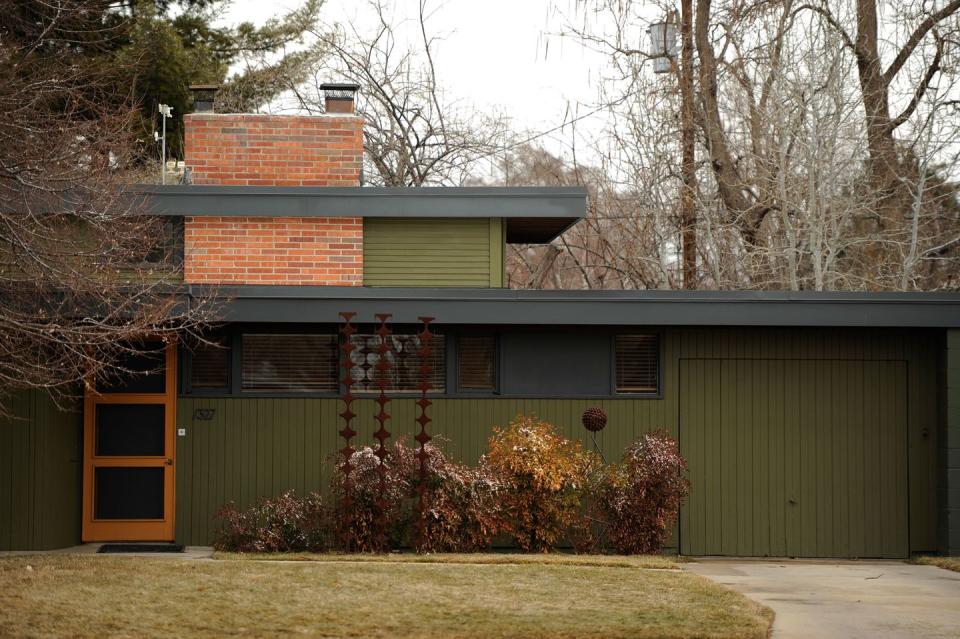Everything You Need to Know About the Ranch Style

- Oops!Something went wrong.Please try again later.
- Oops!Something went wrong.Please try again later.
"Hearst Magazines and Yahoo may earn commission or revenue on some items through the links below."
The ranch-style house is something of an American harbinger. Unlike the European pastiche of Colonial or Victorian houses, the ranch, or “rancher,” style started here, specifically in postwar Los Angeles, and quickly became a fixture of suburban landscapes across the U.S.
With its low-slung frame sprawled across the wide open spaces of the developing American West, this midcentury relic reflected postwar optimism, the aspiration of suburban family life, and a special way of living—as Sunset Magazine put it in 1946, “informal yet gracious.” Now the classic ranch, once a radical departure from tradition, is being rediscovered by today’s generation as a veneration of relaxed West Coast style. Here’s what you need to know about this enduring architectural style.
So What’s the History of Ranch-Style Houses?
At the end of World War II, war veterans who had been offered generous home loans returned home, ready to resume their lives and raise families. However, scarcity during the Great Depression and the war led to few houses being built and pent-up demand. “While architects in Western Europe and the Soviet Union met the need by building high-rise-apartment blocks, Americans created a consumer product that people wanted to buy,” says Alan Hess, architectural historian and author of The Ranch House. “And that was the ranch-style house. It deserves respect because it solved the housing crisis of America in the midcentury.”
First drafted in the 1930s by architects like Cliff Mae and William Wurster, the ranch-house style lent itself well to mass production: low, one-story, and made of simple and inexpensive materials like shake roofs, board-and-batten walls, and brick foundations. Many scholars argue that survival of the ranch house was also largely dependent on the Hollywood scene at the time. Heroic characters played by John Wayne and Randolph Scott had captured the imagination of Americans, and the ranch house—first built in states like California and Texas—encapsulated the mystique of the Old West. “The myth of the cowboy and the heroic Western characters glorified on the big screen—it all blended into the appeal of the ranch house for the average American,” says Hess.

After winning the approval of the Federal Housing Administration, veterans and others could purchase a ranch house with the help of low-cost government loans—a monetary boost that catapulted the ranch house into unprecedented growth. By the 1950s, it was the most ubiquitous residential housing type in the country, with over 1.65 million houses built in 1955, according to Clifford Edward Clark Jr., author of The American Family Home, accounting for nine out of 10 new houses built.
But while the American dream of suburbia was an idyllic pillar of American culture in the ’50s and ’60s, critics denounced the ranch-style house as a conformist suburban artifact, using terms like “ranch burger” and “ticky-tacky.” “There was criticism that suburbia was so low density and that a single family house in the middle of several acres was not efficient,” Hess says. “The price of land was also rising. All of those factors came together to make the ranch house no longer as popular as it had been.” By the early 1970s, buyers and builders were turning to the so-called neo-eclectic homes that were larger, more formal, and more ornate.
What Are the Features of a Ranch House?
Traditional ranch-style homes—also called ramblers—are known for their simplistic, no-frills design elements. Their signature low-slung frame is formed by a single-story floor plan with long, low-pitched rooflines and deep overhanging eaves that extend past the exterior walls of the house. The shape of the rancher is often rectangular, though many can also be built in a U or L shape. Depending on the price point of the house, they could range from 900 square feet to a more generous 2,500 square feet.
Many structures are decidedly Western, calling to mind the days of dude ranches and Mexican haciendas, while more modern styles featured simple and clean lines and mid-century elements. In the Midwest and the East, these homes incorporated colonial elements and materials.

The exterior can be made up of a mix of materials, including brick, stucco, and wood, or clad in siding. Some may have diamond-paned windows or Dutch doors with an upper half that could swing open, and all have large windows throughout. Ranch houses also often feature an attached front-facing garage and finished basement space.
Nearly all ranch homes are laid out on a single-story floor plan with easy access to all areas of the house and an open flow between rooms. Its open-concept layout frequently has a devoted outdoor space—be it a patio, deck, or lawn—that is accessible by large sliding glass doors that open from the living area.
The traditional 19th-century ranch house built out on the Plains didn’t have open plans, but the modern adaptation a century later did, with a combined kitchen, dining room, and living room that would flow into the backyard. “The indoor-outdoor lifestyle was very appealing for young families with kids,” Hess says. “Kids can play outside, the mothers could be cooking, which was the stereotype at the time. The ultimate plan was perfectly suited to that suburban family lifestyle.”

Inside, the ranch house often had natural wood and knotty pine throughout, with Western-themed wallpaper that featured fancy and fun lariats and horses—a favorite for children’s rooms. With the availability of modern appliances to the mass market for the first time, these new luxuries—TVs, dishwashers, intercoms that connected the rooms—were an integral part of the suburban ideal. “People wanted to live as if they were out on the Plains somewhere, but they wanted rustic living in modern splendor,” Hess says. “Imagine that you were living next to John Wayne, the cowboy, but you were completely comfortable.”
Where Can You Find Ranch Houses Today?
While it may never return to its unparalleled mainstream traction, the populist house style is making a comeback as homeowners are purchasing and restoring ranch houses all across suburban America. Young buyers see them as affordable options that appeal to a minimalist lifestyle in a difficult housing market, and the aging population is opting to downsize to them for both the convenience of a single story as well as a nostalgic return to the aesthetic of their youth.
In addition, a growing group of volunteers and homeowners have been taking action to save and preserve classic and retro American ranch homes, listing a number of historic neighborhoods—from Colorado’s Arapahoe Acres to California’s Eichler houses to Texas Hill Country—on the National Register of Historic Places.
You Might Also Like

